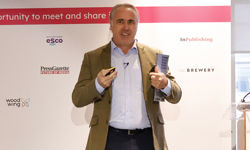Wyndeham Plymouth (formerly St Ives Plymouth) was purchased by Walstead Investments, Wyndeham Group’s parent, as part of the St Ives Web division acquisition which completed on 6 April 2011 and which also included web offset printing businesses in Peterborough and Roche (Cornwall).
Wyndeham Plymouth, which is the smallest of the three ex. St Ives Web businesses, made a £2.95 million loss before tax on turnover of £20.2 million in the financial year ended 30 July 2010. The company operates two 32pp presses, three stitching lines and two perfect binders.
If Wyndeham Plymouth closes, and subject to agreement with its clients, Wyndeham Group will transfer production of its work to its other web offset facilities that operate larger 64/72pp presses.
Roy Kingston, Wyndeham Group’s Chief Operating Officer, said: “Wyndeham Plymouth has been making losses for many years. We have reviewed a range of options to find an economic solution that would make this business viable. Any solution would have to quickly stem the losses and, importantly, show a realistic plan to achieve sustainable profits. So far, we have been unable to find a workable business model that meets these goals meaning the site will continue to generate substantial losses which we are not prepared to absorb.”
Paul Utting, Wyndeham Group’s Chief Executive Officer, said: “We regret having to go through this process. However, it is symptomatic of the wider structural changes that are becoming increasingly necessary to ensure the diminishing UK web offset industry can continue to supply publishers and print buyers with a reliable service in the long term.
“Wyndeham Group is at the forefront of consolidating the sector and we intend to maintain our market-leading position. It is paramount that we match capacity with demand and that our clients’ work is produced on the most efficient equipment we have available. Unfortunately, with declining volumes compounded by spiralling raw material costs and market prices at an all time low, we have to restructure to remain viable. I anticipate there will be further initiatives of this type across the sector as all of our main competitors continue to make significant losses.”










